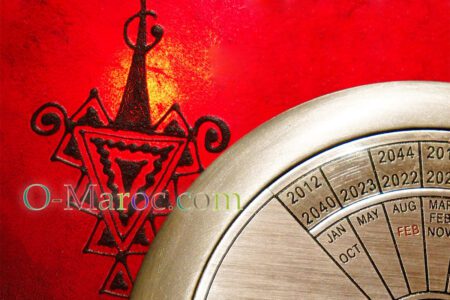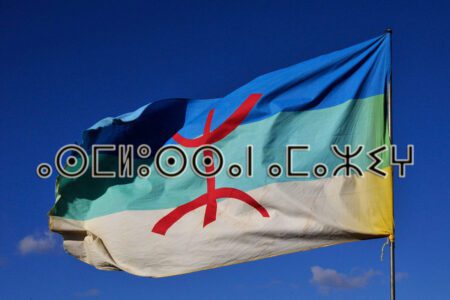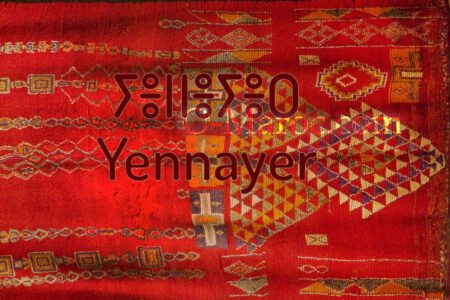The Maghreb, and Morocco in particular, is remarkably well represented in the catalogue of an auction to be held at Drouot on 5 May 2015. Out of 312 lots, 150 are from the Maghreb, including 90 from Morocco – almost a third of the sale!
The vast majority is Berber jewellery, mainly in silver. While some of the Kabyle pieces are gilded, the Moroccan jewellery on display is made of silver, sometimes enamelled, sometimes decorated with coral. There are also some large amber necklaces.
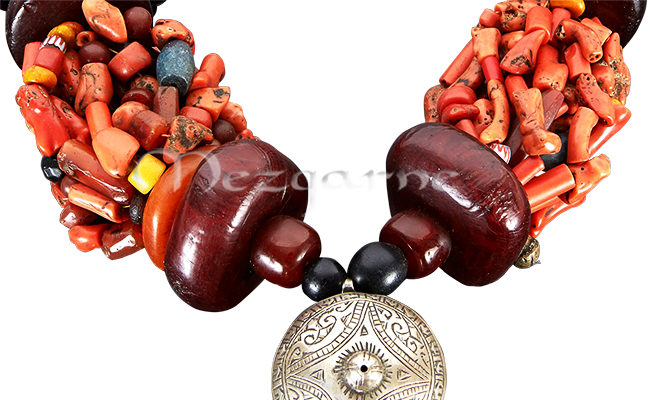
Lot prices remain relatively low, between €200 and €1,200. It is extremely difficult to date a piece of Berber jewellery with any degree of accuracy: jewellery is as much an item of adornment as it is a part of our heritage, and people do not hesitate to melt it down in times of need, then buy new ones once prosperity returns. And the mâalems (artisan jewellers) use the same traditional motifs, with no visible change over time.
So, paradoxically, it’s much easier to tell where a piece of jewellery comes from than when it was made!
The second point is that it is often the case at auction that the price at which a lot is actually sold is much higher than the estimate: the estimate is more of a ‘reserve price’ than the actual value of the jewel.
That said, let’s take a look at some of the beautiful pieces in this catalogue!
The Aït-Atta Loubane necklace
Although this one is associated with the Aït Atta tribe, in reality it is all over Morocco that women wear these imposing necklaces, originally made from large fossil amber beads, hence the name. The small pieces of amber are heated and melted to form large beads, as shown here. This causes them to lose their transparency.
Unfortunately, in modern versions, the irregular pieces of amber, as here, are replaced by large, perfectly round plastic beads, on which you can see the trace of the moulding!
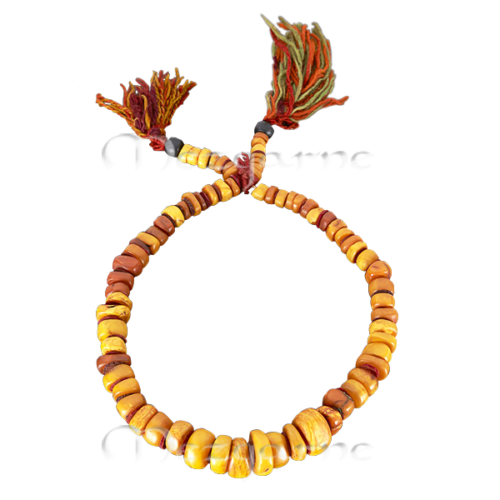
The pearls are separated from each other by small rounds of felt, and the necklace is fastened with woollen pompoms in colours that were once bright!
This necklace is estimated at between €800 and €1,200.
Loubane, gum arabic, incense, copal, ambergris…
Between tradition and translation, there are a lot of questions regularly asked about what loubane really is, and a lot of confusion.
“Loubane” in Arabic refers to two different things:
- the resin of a tree, Boswellia, from which incense is made. In particular, Yemeni incense, which is very famous. This resin, also known as gum arabic, is fairly light in colour, but depending on the harvesting conditions, can be as deep yellow. This incense is one of the fragrant mixtures used in ceremonies throughout Morocco, thrown over the coals of a brazier.
- Vegetable amber, fossil, classic. This is known as “Loubane Dakhar“, or “Loubane El Hour” (pure amber, male amber), at least in Morocco.
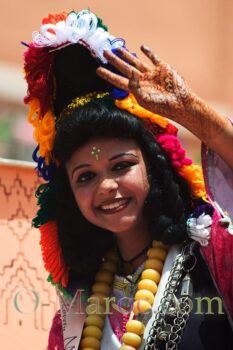
… because, and this is the pleasure of ‘dialects’ compared with classical Arabic, in other parts of the Arab world this Loubane Dakhar refers to Yemeni incense. In Morocco, incense made from gum arabic is simply called ‘Loubane’.
Finally, to complicate matters, there is a third substance, ambergris, which is no longer sold in its natural form. This is sperm whale dung, collected on beaches, which is grey in colour and gives off an intense scent. This ambergris is called, in Arabic … عنبر and is pronounced “ambar“!
… And it used to be that small, fragrant pearls of ambergris (ambar) were inserted between the large pearls of vegetable amber (loubane), which never gave off such a fragrance.
(Roger Martin du Gard recalls one of these necklaces: “He used to play with his necklace, whose grains of honey were separated by small balls of ambergris, the colour of lead, which warmed under his fingers and then exhaled a perfume so tenacious that it was not uncommon, two days later, to find the aroma in the palm of one’s hands.“)
Because of the memory of the scent of these necklaces, people often confuse ‘fossil’ Loubane with ‘incense’ Loubane, the only one capable of rivalling ambergris. In the first photo in the post, I think the two ‘ugly grey’ pearls are ambergris.
And copal?
Copal is a fossil resin, like amber, but it does not come from the same plants. Amber comes from conifers, whether from the Baltic forests or Lebanon, while copal comes from angiosperms, i.e. flowering plants. In nature, they are very similar, copal being softer than amber, and only scientific analysis can differentiate them with certainty. Whether deliberate or not, the two materials are often confused (Mexican or Indian ‘ambers’, for example, are copals).
In the first photo in the post, the large dark balls are made of copal.
The Djebel Bani bracelets
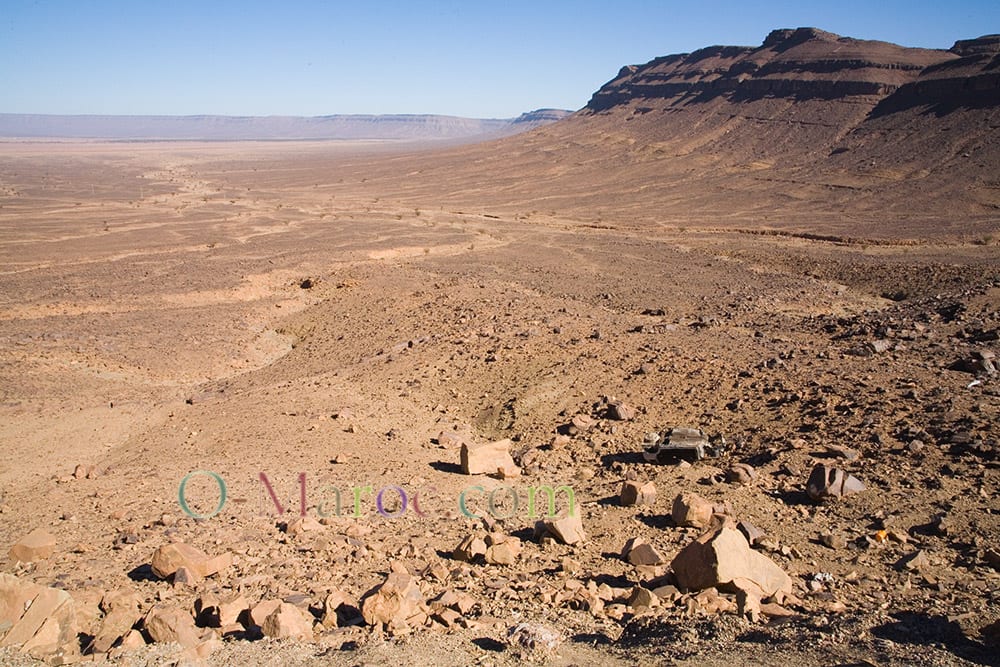
Djebel Bani is the very last mountain before the Sahara, which you cross on your way from Zagora to M’hamid. It’s already very desert-like, arid, stony… and it was an obvious nomadic route, not only for the tribes, but also for the caravans setting off on the gold and ivory route to Timbuktu.

This set of five bracelets, with its variety, is typical of Berber art. In particular, the lower bracelets, made of enamelled silver and adorned with glass cabochons set in a silver crown, are still made today.
The top two bracelets are less common. In particular, the one on the right, with its polyhedron-shaped ornaments. These were not just decorative: the bracelet is heavy, and a woman under attack could simply stun or even smash her opponent’s temple with a wide movement of her arm!
The whole set is estimated at between €200 and €250, or just €50 per bracelet!
Fibulae from Tiznit
It hardly needs repeating, but Tiznit is the silver jewellery capital of Morocco. In this town on the borders of the deep south, a quality craft has developed that is still evolving today.

A large belt buckle from Essaouira
We move on to another region and another style.
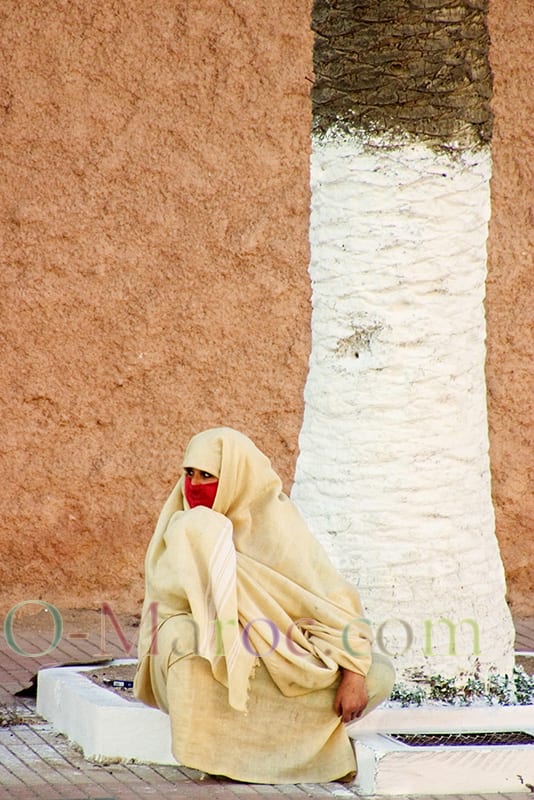
Essaouira, the former Mogador, has long had a special status in Morocco. At a time when the country was closing in on itself, becoming difficult for foreigners to access, Essaouira remained open. The “King’s Merchants”, the Toujjar Es-Sultan, Jews and merchants, made their living and the Kingdom’s wealth in one of the only open ports.
The clasp in the centre forms a six-petal flower with a large round heart. This is known as the “Rose of Mogador“, and is typical of Jewish jewellery from Essaouira, as are the double palmettes at the top.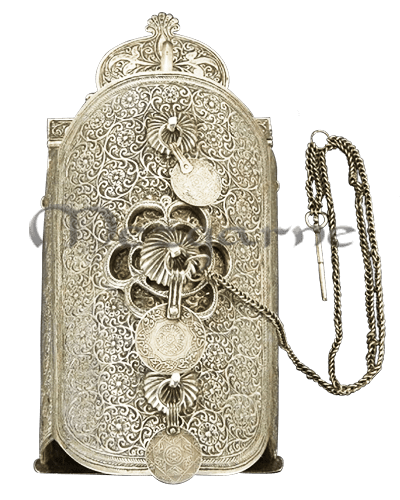
{%CAPTION%}
The buckle is rounded, which gives it its imaginary name “Ferkoun“, meaning “turtle-shaped“. Many Maghreb jewels are named after animals, such as tortoises, camels’ teeth, etc.
As is often the case, it is adorned with silver pieces that do not allow the jewel to be dated with any precision: they may be much earlier, or they may have been added later, as replacements.
Very elaborate, very large (29 centimetres high), this ceremonial piece of jewellery, designed to fasten the belt of a caftan, is estimated at between €400 and €600.
If you are interested, I urge you to have a look at the online catalogue of the sale, on the Rémy Le Fur website, from which all the photos of the jewellery are taken.
 A typo or syntax error? You can select the text and hit Ctrl+Enter to send us a message. Thank you! If this post interested you, maybe you can also leave a comment. We'd love to exchange with you !
A typo or syntax error? You can select the text and hit Ctrl+Enter to send us a message. Thank you! If this post interested you, maybe you can also leave a comment. We'd love to exchange with you !


